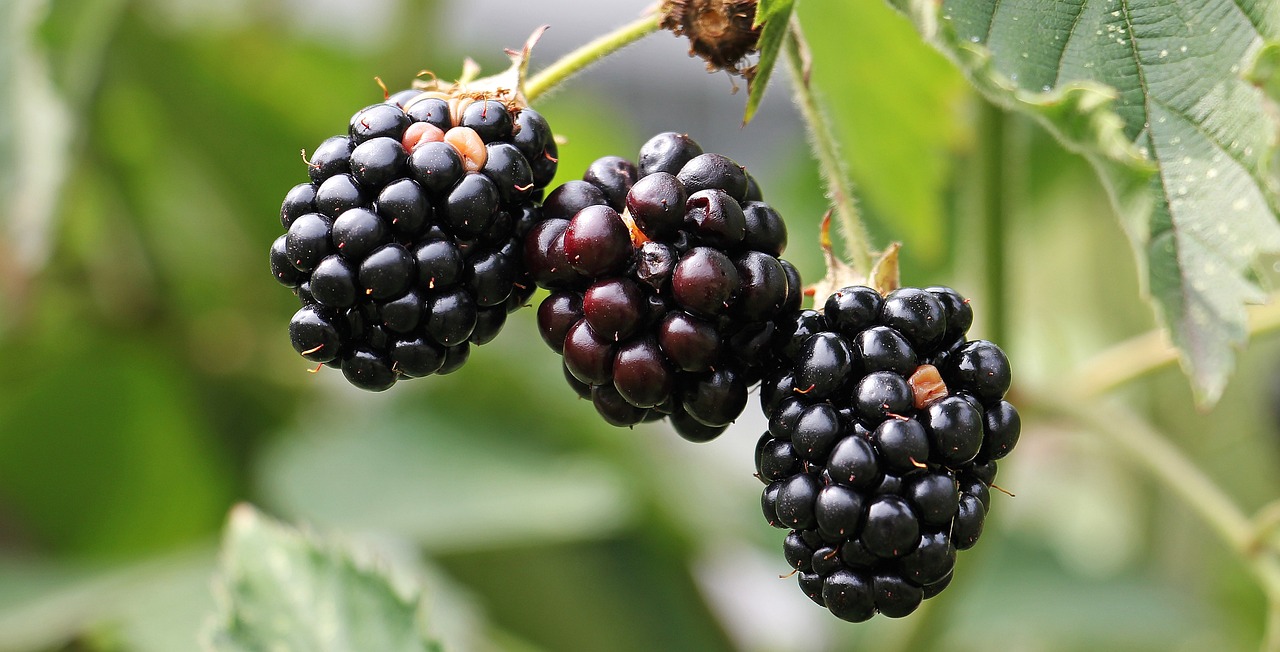Blackberries are a delicious and nutritious fruit that have become a staple in many diets around the world. However, have you ever wondered when do blackberries bloom? The sight of blackberry bushes covered in tiny white flowers is truly a sight to behold, signaling the arrival of spring and the start of a new growing season.
When Do Blackberries Bloom?
Blackberries typically bloom in late spring to early summer, depending on the variety and local climate conditions. Blooming is influenced by factors such as temperature, sunlight, and day length. In warmer regions, blackberries may start to bloom as early as April, while in cooler areas, blooming may not occur until May or June.
Once the buds begin to swell and burst, the flowers will emerge, revealing delicate white or pink petals. The timing of the bloom is crucial for fruit development, as it directly correlates with the availability of pollinators and the subsequent formation of berries.
How Long Do Blackberry Flowers Last?
Blackberry flowers generally last for approximately one to two weeks, depending on the specific variety and environmental conditions. During this period, the flowers are open and receptive to pollination, primarily from bees and other insects.
Once pollination occurs, the flowers will begin to wither and fall off, making way for the developing fruit. The entire flowering process, from bud break to fruit set, can take anywhere from two to four weeks. It is essential to provide blackberry plants with optimal growing conditions during this critical stage to ensure a bountiful harvest.
How Often Do Blackberries Bloom In A Year?
Blackberries typically bloom once a year during the late spring to early summer months. The exact timing of the bloom will vary based on factors such as the specific variety, location, and climate. Some everbearing blackberry varieties, however, can produce two crops in a single growing season.
These plants will have an initial bloom in late spring or early summer, followed by a second bloom later in the summer or early fall. Despite this, the majority of blackberry plants will only produce one crop per year.
What Are The Signs That Blackberries Are About To Bloom?
Before blackberries bloom, several signs indicate that the plants are preparing for the flowering stage. One of the most noticeable signs is the appearance of new growth, which typically emerges in the form of green shoots or canes. Additionally, the buds on these canes will begin to swell, change color, and become more prominent.
As the buds grow larger and more elongated, they may start to reveal small, white or pink flower petals. These signs typically occur several weeks before the actual blooming process, providing ample time for gardeners to prepare for the upcoming flowering stage.
What Kind Of Soil Do Blackberries Need To Bloom?
Blackberries thrive in well-draining, fertile soil with a pH level between 5.5 and 7.0. They prefer a slightly acidic to neutral soil, which promotes optimal nutrient availability and uptake. It is essential to provide adequate organic matter, such as compost or well-aged manure, to improve soil fertility and structure.
Additionally, blackberries benefit from a layer of mulch to help retain moisture, suppress weeds, and regulate soil temperature. Ensuring proper soil conditions will not only support the overall health and growth of the blackberry plant but also promote optimal blooming and fruit production.
How Do I Prune Blackberry Bushes For Optimal Blooming?
Pruning blackberry bushes is essential for optimal blooming and fruit production. Start by removing any dead, damaged, or diseased canes during the dormant season, typically in late winter or early spring. Next, cut back any lateral branches on the remaining canes to encourage vigorous growth and increased fruit production.
For trailing varieties, thin the canes by removing approximately one-third of the oldest canes each year. Proper pruning will not only promote healthy plant growth but also enhance the blooming process, leading to a more bountiful harvest.
Why Are My Blackberry Bushes Not Blooming?
There are several reasons why blackberry bushes may not be blooming. Inadequate sunlight is one common cause, as blackberries require at least six to eight hours of direct sunlight per day to thrive and produce blooms. Insufficient or excessive water can also lead to poor blooming, as blackberries need consistent moisture without becoming waterlogged.
Poor soil fertility or an improper pH level can hinder nutrient uptake and negatively impact blooming. Additionally, improper pruning or lack of pruning can result in decreased bloom production. Finally, young plants or recently transplanted bushes may require a few years to become established before they produce blooms.
How Can I Encourage My Blackberry Bushes To Bloom?
To encourage blackberry bushes to bloom, provide optimal growing conditions and proper care. Ensure that the plants receive at least six to eight hours of direct sunlight daily, as sunlight promotes growth and flower development.
Maintain consistent soil moisture, taking care not to overwater or underwater the plants. Improve soil fertility by incorporating organic matter and maintaining the proper pH level.
Prune blackberry bushes annually to remove dead or damaged canes, promote healthy growth, and stimulate blooming. Lastly, have patience with young or recently transplanted plants, as they may need time to become established before they produce blooms.
Conclusion: When Do Blackberries Bloom?
In conclusion, blackberries bloom in late spring to early summer, and the timing varies based on the variety and local climate conditions. The flowers typically last for one to two weeks and are receptive to pollination during this period. Blackberries usually bloom once a year, although some everbearing varieties can produce two crops. Several signs, such as new growth and swelling buds, indicate that blackberries are about to bloom.
To promote blooming, blackberries require well-draining, fertile soil with a slightly acidic to neutral pH. Providing adequate organic matter and using mulch can improve soil conditions. Pruning is crucial for optimal blooming and fruit production, involving the removal of dead or damaged canes and cutting back lateral branches.

